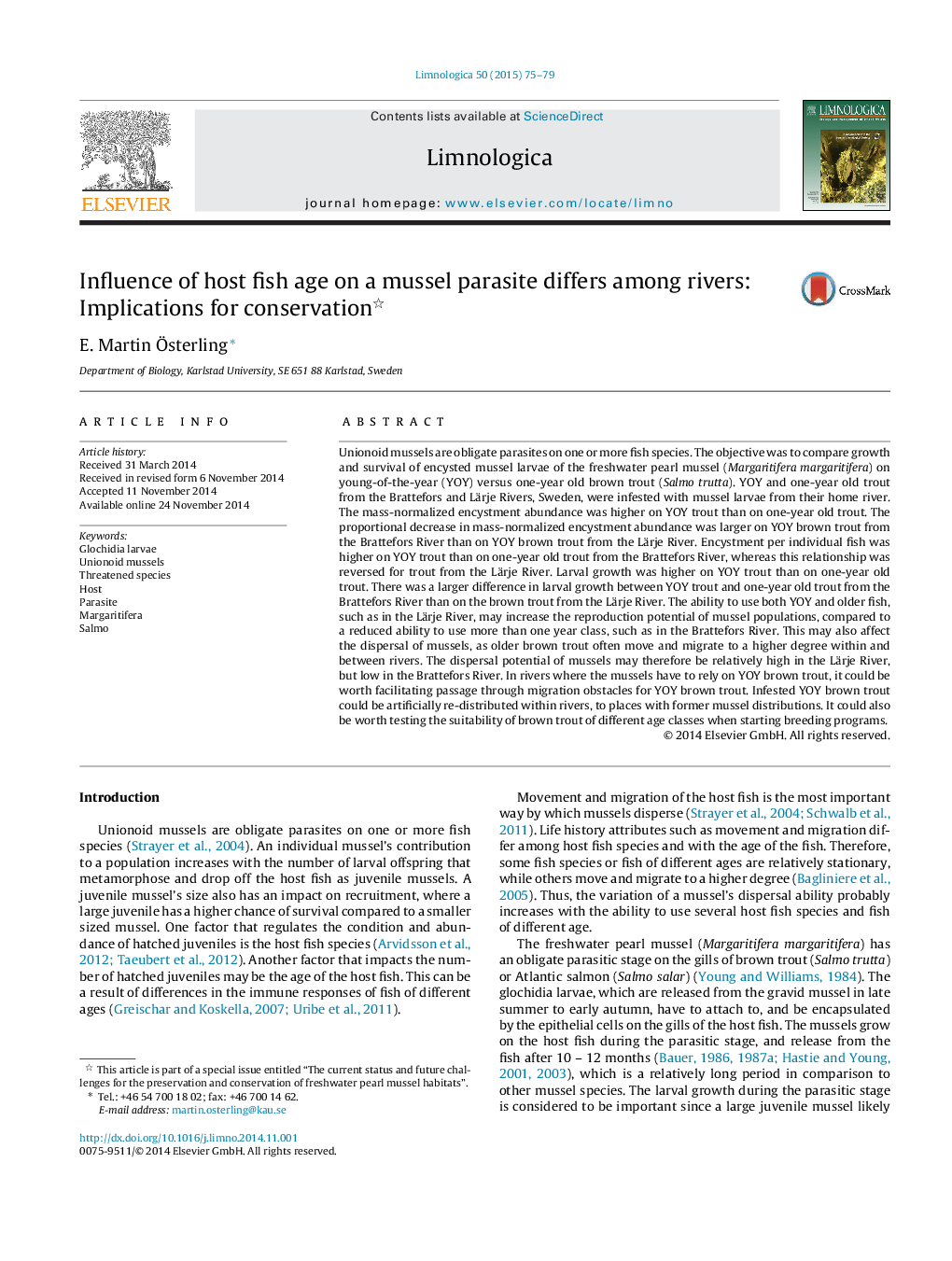| Article ID | Journal | Published Year | Pages | File Type |
|---|---|---|---|---|
| 6305579 | Limnologica - Ecology and Management of Inland Waters | 2015 | 5 Pages |
Abstract
Unionoid mussels are obligate parasites on one or more fish species. The objective was to compare growth and survival of encysted mussel larvae of the freshwater pearl mussel (Margaritifera margaritifera) on young-of-the-year (YOY) versus one-year old brown trout (Salmo trutta). YOY and one-year old trout from the Brattefors and Lärje Rivers, Sweden, were infested with mussel larvae from their home river. The mass-normalized encystment abundance was higher on YOY trout than on one-year old trout. The proportional decrease in mass-normalized encystment abundance was larger on YOY brown trout from the Brattefors River than on YOY brown trout from the Lärje River. Encystment per individual fish was higher on YOY trout than on one-year old trout from the Brattefors River, whereas this relationship was reversed for trout from the Lärje River. Larval growth was higher on YOY trout than on one-year old trout. There was a larger difference in larval growth between YOY trout and one-year old trout from the Brattefors River than on the brown trout from the Lärje River. The ability to use both YOY and older fish, such as in the Lärje River, may increase the reproduction potential of mussel populations, compared to a reduced ability to use more than one year class, such as in the Brattefors River. This may also affect the dispersal of mussels, as older brown trout often move and migrate to a higher degree within and between rivers. The dispersal potential of mussels may therefore be relatively high in the Lärje River, but low in the Brattefors River. In rivers where the mussels have to rely on YOY brown trout, it could be worth facilitating passage through migration obstacles for YOY brown trout. Infested YOY brown trout could be artificially re-distributed within rivers, to places with former mussel distributions. It could also be worth testing the suitability of brown trout of different age classes when starting breeding programs.
Related Topics
Life Sciences
Agricultural and Biological Sciences
Aquatic Science
Authors
E. Martin Ãsterling,
